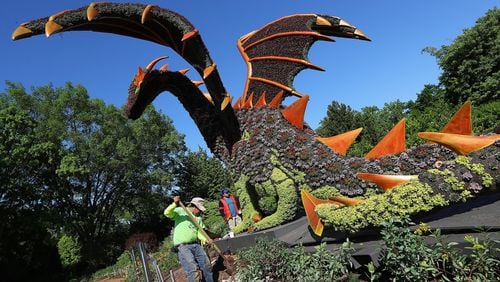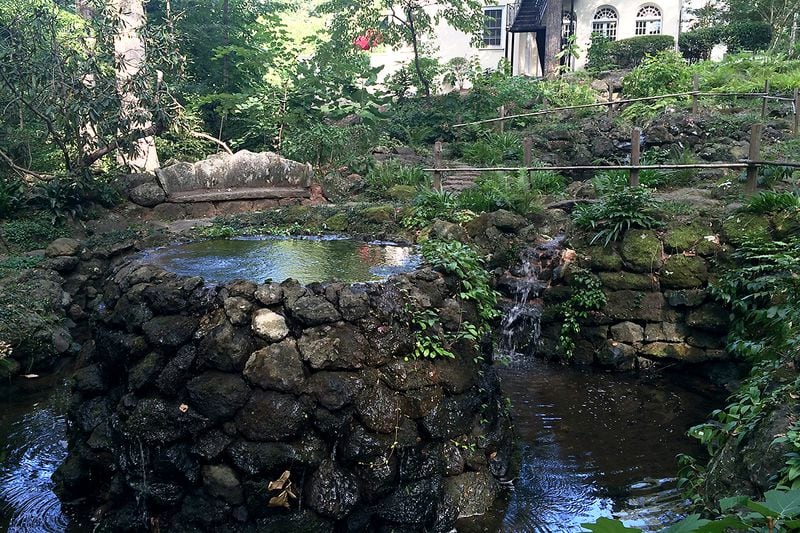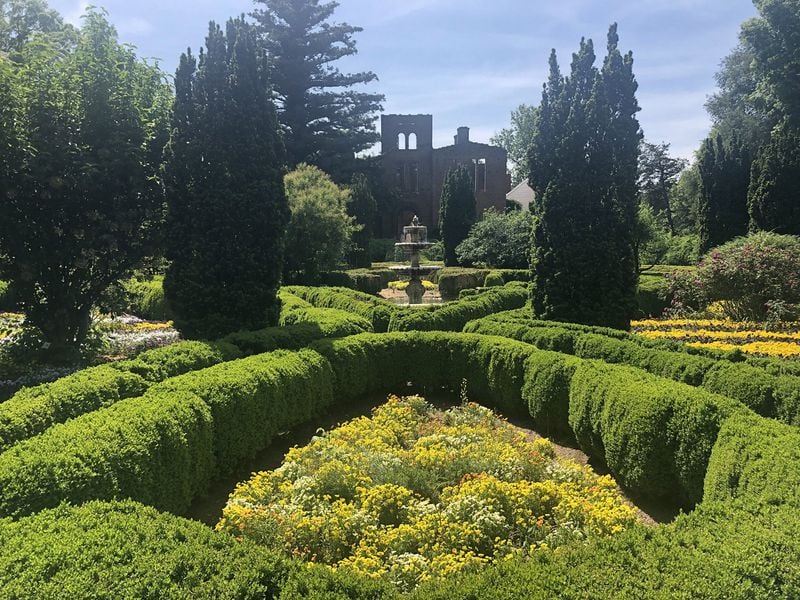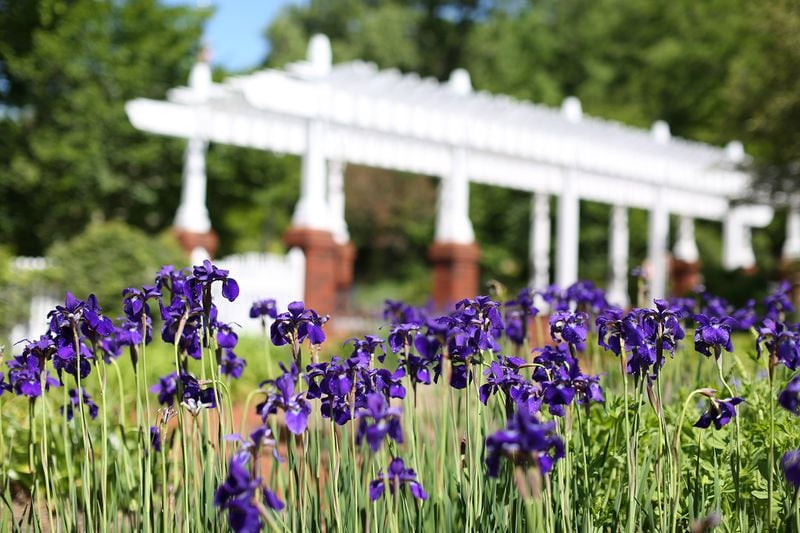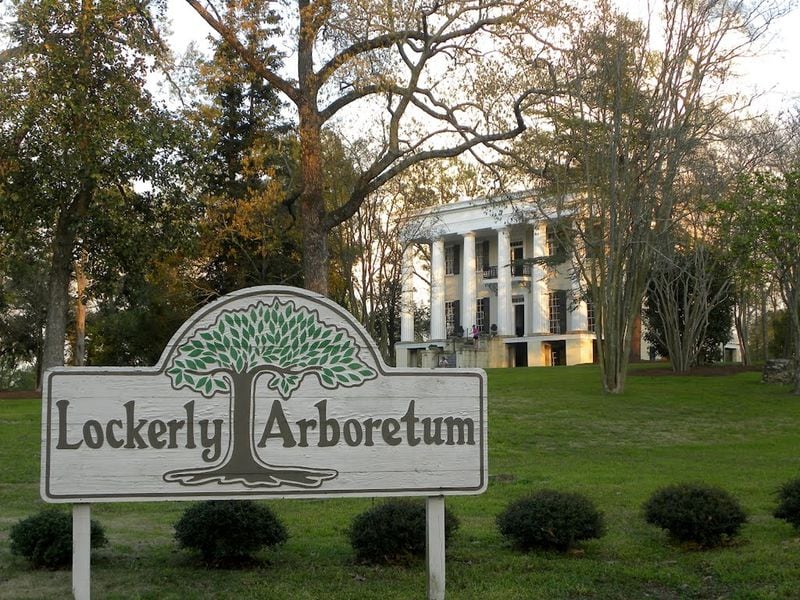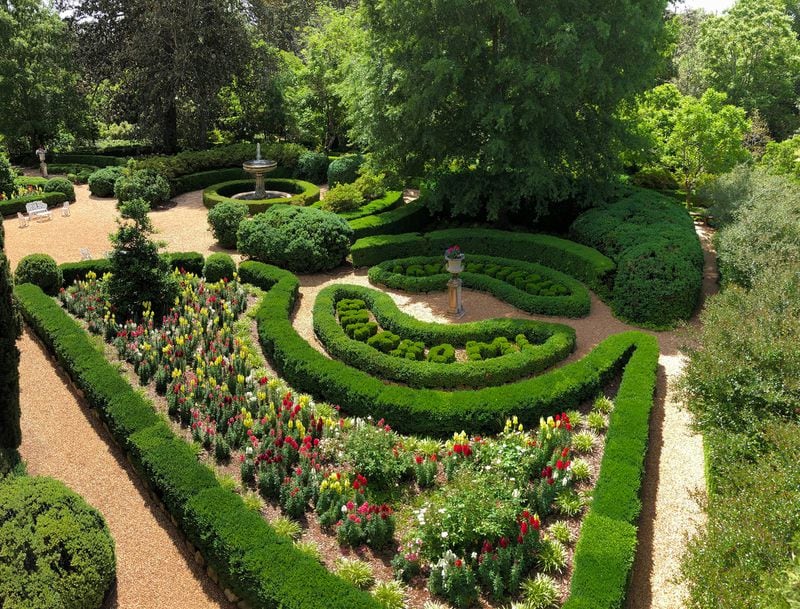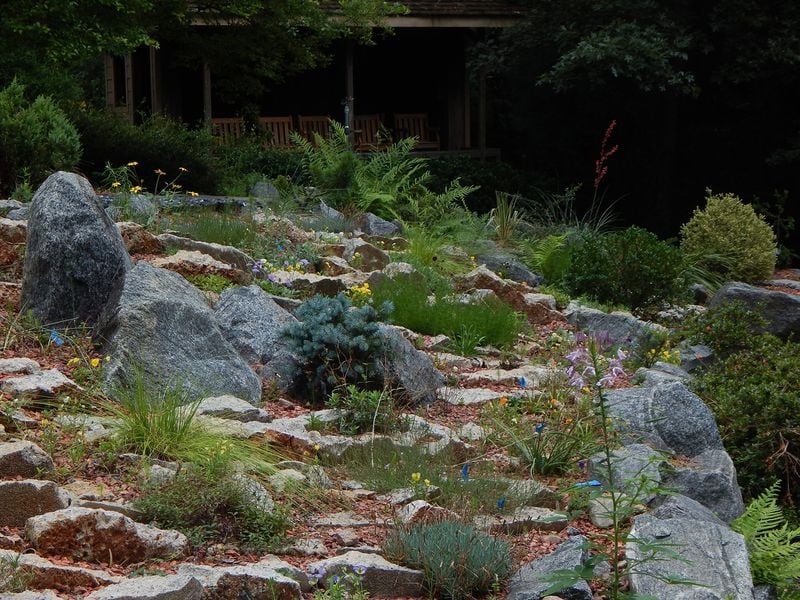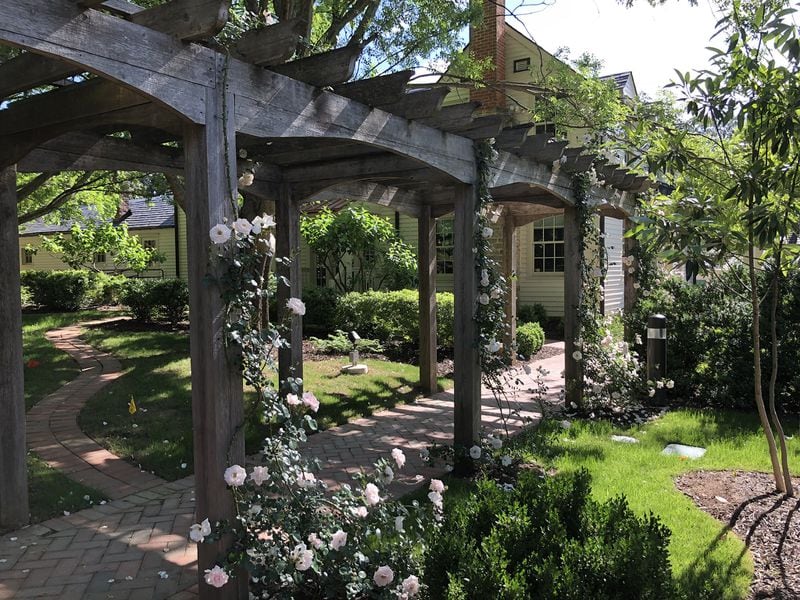The Grateful Dead once sang “sugar magnolia blossom’s blooming” and gardens throughout Georgia are nothing short of a “Sunshine Daydream” with the blooming of May flowers.
The Peach State is home to more than 3,600 native plant species, making Georgia one of the most botanically rich states in the southeastern United States, according to the Georgia Native Plant Society.
»»RELATED: How to get a peek inside Atlanta's private gardens
With a plethora of plants to see, finding out which flowers are currently blooming can be quite the challenge. In an attempt to help you seem as educated on the subject of botany as George Washington Carver, we compiled a list of gardens around Atlanta that showcase an abundance of flowers currently in bloom.
Atlanta Botanical Garden
This weekend marks the 62nd annual Atlanta Rose Show, happening Saturday, May 11. You'll find a rainbow of color, an array of varieties and experts on hand to answer your questions from noon until 6 p.m. That day also marks the opening of the latest installment of "Imaginary Worlds." Chase Alice down a rabbit hole at the new "Alice In Wonderland"-inspired exhibition of giant topiary-like plant sculptures including a 27-foot-tall dragon and a white rabbit of the same size that floats inside an upside-down umbrella in the Skyline Garden pond at the Midtown Garden. The Skyline lawn features a chess board bordered by nine heart "trees" each more than 12 feet tall, with a giant Cheshire Cat poised nearby. Be on the lookout because "Alice herself is on hand – just elsewhere in the Garden."
9 a.m.-7 p.m. Tuesday-Sunday (April -October); 9 a.m.-5 p.m.Tuesdays-Sundays (November-March). $21.95; $18.95 ages 3-12; under age 3 free. 1345 Piedmont Ave. NE, Atlanta. 404-876-5859, atlantabg.org.
Credit: Pete Corson
Credit: Pete Corson
Cator Woolford Gardens
Cator Woolford Gardens is nestled between the Lake Claire and Druid Hills neighborhoods. This 39-acre 1920s estate is virtually untouched by city sprawl. The Italian-style gardens is the social enterprise of the Frazer Center, a nonprofit located on the estate grounds that has the mission of fostering inclusive communities for children and adults with and without disabilities. The nonprofit Atlanta Hospital Hospitality House is located in the estate mansion, which was the home of Cator Woolford, a principal founder of what is now known as Equifax. The surrounding old-growth Frazer Forest is perfect for neighborhood hikers and dog-walkers. Among the current blooms in the gardens are lenten roses, asters, daisies, hydrangea varieties, homestead verbena, woodland phlox, Japanese iris, astilbe, climbing roses, borage and blue-eyed grass.
Sunup to sundown. Daily when no events are happening. 1815 S. Ponce de Leon Ave. NE, Atlanta. 404-377-3836, catorwoolfordgardens.org
Barnsley Resort
Just an hour outside of Atlanta sits the 3,000-acre estate Barnsley Resort, which is filled with rolling hills and vibrant flowers in full spring bloom. Just in front of the historic Manor House Ruins lies a classic boxwood parterre, which dates back to the early 1800s and is filled with spring-time blooms like multi-colored iris, peonies, columbine, pink roses, white tea roses, pink and red flowering quince, crinum and blue asters.Though the parterre is the flower epicenter of the property, guests are able to stroll the grounds to enjoy flowers like blue scaevola, duranta, red salvia, blue angelonia, white red green leaf begonia, bronze leaf red flower begonia, red penta, perennial hostas, and plumbago. Scarlett, pink, purple and white verbena will also be in bloom, along with orange, Confetti, New Gold and red lantanas, and various coleus, including Alabama Sunset, Lime Golden Sunset, pineapple and mosaic. While strolling about, guests should be sure to keep an eye out for the Green Rose of Barnsley, a rose brought to the estate in the mid-1800s, which then seemed to have receded as the estate went into ruins until locals brought the flower back to the estate in the late 1900s when the resort was being constructed.
9 a.m.-5 p.m. daily. It’s recommended to call in advance to make sure that the boxwood gardens are open since they’ll close for special events. $10; $8 for senior citizens; $5 for children and students. 597 Barnsley Gardens Road, Adairsville. 770-773-7480, barnsleyresort.com.
State Botanical Garden of Georgia
The State Botanical Garden of Georgia at the University of Georgia is currently highlighting spring blooms with informative signage in its many display gardens, including the Heritage Garden, Shade and Native Flora Gardens, International Garden, Flower Garden and Herb & Physic Garden, as well as in the conservatory and along 5 miles of nature trails.
A new addition, the Alice H. Richards Children’s Garden opened this spring to showcase the valuable natural resources in Georgia. The garden features a replica of Ellison’s Cave in Walker County, the 12th deepest cave in the United States, mastodon fossils from 40 million years ago, granite mined from Elbert County and a pitcher plant bog.
Display gardens and nature trails are open daily 8 a.m.-7 p.m., but are closed on University of Georgia holidays. Visitor Center 9 a.m.-4:30 p.m. Tuesday-Saturday; 11:30 a.m.-3 p.m. Sunday. Closed Mondays. Free. 2450 S. Milledge Ave., Athens. 706-542-1244, botgarden.uga.edu.
Lockerly Arboretum
Even though the main focus at the Lockerly Arboretum are trees and not flowers, the 50-acre public garden includes walking trails and a pond. Its plantings feature flowering shrubs such as camellias, azaleas, perennials, annuals and a variety of trees, including oaks and magnolias. A 1-mile nature trail is home to many mature hardwoods, ferns and wildflowers, including a tall Stewartia (Stewartia monadelpha), a small leaf vibernum and a cedar elm, all Georgia State Champion trees. The property’s crown jewel is Rose Hill, a beautiful Greek Revival Home that was built by Judge Daniel Tucker in 1852, when Milledgeville was the capital of Georgia.
8:30 a.m.-4:30 p.m. Mondays-Fridays; 10 a.m.-4 p.m. Saturdays. Free. $3 to tour Rose Hill. 1534 Irwinton Road, Milledgeville. 478-452-2112, lockerly.org
Ferrell Gardens at Hills & Dales Estate
One hour south of Atlanta is the old Callaway family home that is best known for its 13,000-square-foot Neel Reid designed home and formal boxwood parterres. The Ferrell Gardens began as a formal garden in the early 1800s and the property was purchased by Mr. and Mrs. Fuller E. Callaway in 1911. Over the years, generations of Callaways have continued to preserve and nurture the gardens.
The month of May brings lots of interesting and colorful flowers to one of the best preserved 19th century gardens in the country. From blooming trees such ascatalpas, kousa dogwoods and fragrant Southern magnolias, to the formal herb gardens featuring beds of snapdragons, yarrow and dianthus, there are several blooms found at Hills & Dales Estate. Sprinkled here and there, adding a cottage effect, are foxglove, iris, larkspur and other favorites. Gardeners always enjoy seeing the espaliered Southern magnolias that frame the arched windows in the pool house courtyard and the phalaenopsis orchids in the greenhouse.
Tours are offered 10 a.m.-6 p.m. Tuesdays-Saturdays and 1 p.m.-6 p.m. Sundays from March-June. $5-$20; ages 6 and younger are free. 1916 Hills & Dales Drive, LaGrange. 706-882-3242, hillsanddales.org.
Smith-Gilbert Gardens
The 17-acre Smith-Gilbert Gardens in Kennesaw is home to a bonsai collection, dozens of garden sculptures, koi ponds and the historic Hiram Butler House. With more than 4,000 plant species in the collection there is always something in bloom, but right now is the best time to visit if you want to see some of the Southeast’s most iconic flowers. The Rose Garden is always close to perfection in May. Featuring climbers, antiques, hybrid teas, and grandifloras, the colors and fragrances are as diverse as the people of Atlanta. Foxgloves and bearded irises are on display in the perennial border while perennial geraniums, sedum, catmint, bellflower, columbine and dianthus can be found in the crevice garden. Masses of white oakleaf hydrangeas and blue mopheads, white and lime-green cultivars of Hydrangea paniculata, as well as Annabelle hydrangea are well budded while abutilon’s red and yellow tube-shaped flowers are already attracting migrant ruby-throated hummingbirds.
If you’re up for a stroll at the gardens, the woodland includes rhododendrons, viburnums, kousa dogwoods, Stewartia and deutzia, all at the peak of their spring glory. Jack-in-the-pulpits are also beginning to bloom quite heavily along the path. Very soon, possibly in the next week, hydrangeas will begin to show color throughout Smith-Gilbert gardens.
9 a.m.-4 p.m. Tuesdays-Saturdays. $5-$10. 2382 Pine Mountain Road, Kennesaw. 770-919-0248, smithgilbertgardens.com
Donaldson-Bannister Farm
Though not a traditional garden, the rose arbor at the Donaldson-Bannister Farm is a stunning must-see. The main home was built circa 1870 and was restored by the City of Dunwoody and Dunwoody Preservation Trust. The arbor was reconstructed and pink New Dawn roses were re-introduced last year along with some of the surviving roses. Today, the property is a city park and hosts both public and private events.
Dawn to dusk daily. Free. Donaldson-Bannister Farm, 4831 Chamblee Dunwoody Road, Dunwoody. 770-668-0401, dunwoodypreservationtrust.org
About the Author
